
Airchains
None
Stars: 114
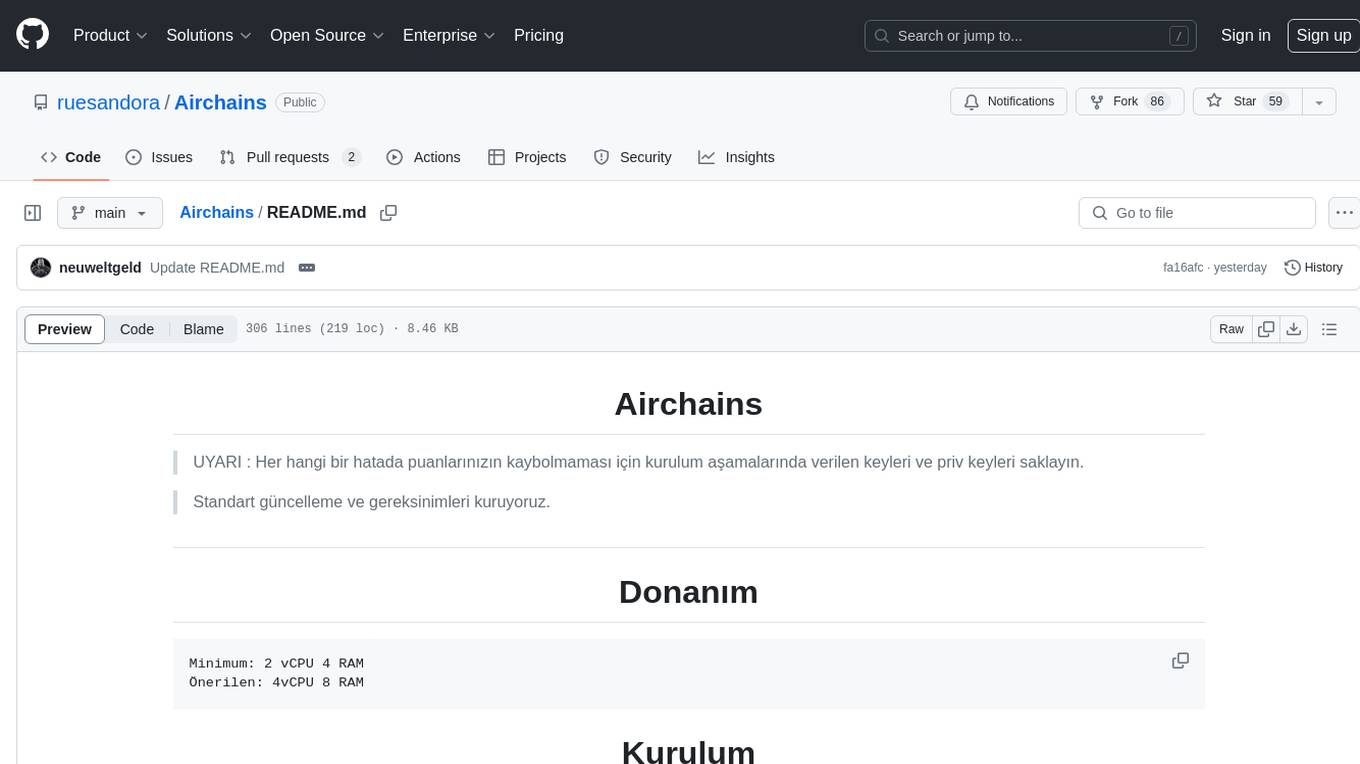
Airchains is a tool for setting up a local EVM network for testing and development purposes. It provides step-by-step instructions for installing and configuring the necessary components. The tool helps users create their own local EVM network, manage keys, deploy contracts, and interact with the network using RPC. It also guides users on setting up a station for tracking and managing transactions. Airchains is designed to facilitate testing and development activities related to blockchain applications built on the EVM platform.
README:
UYARI : Her hangi bir hatada puanlarınızın kaybolmaması için kurulum aşamalarında verilen keyleri ve priv keyleri saklayın.
Standart güncelleme ve gereksinimleri kuruyoruz.
Minimum: 2 vCPU 4 RAM
Önerilen: 4vCPU 8 RAM
# güncelleme
apt update && apt upgrade -y
sudo apt install -y curl git jq lz4 build-essential cmake perl automake autoconf libtool wget libssl-dev
# Go kurulumu
sudo rm -rf /usr/local/go
curl -L https://go.dev/dl/go1.22.3.linux-amd64.tar.gz | sudo tar -xzf - -C /usr/local
echo 'export PATH=$PATH:/usr/local/go/bin:$HOME/go/bin' >> $HOME/.bash_profile
source .bash_profile# Gerekli repoları çekiyoruz
git clone https://github.com/airchains-network/evm-station.git
git clone https://github.com/airchains-network/tracks.git# evmos ağımızın kurulumuna başlıyoruz, bu localde çalışan kendi ağımız.
cd evm-station
go mod tidy# Bu komutla kurulumu tamamlıyoruz.
/bin/bash ./scripts/local-setup.shSistem dosyasının sağlıklı çalışabilmesi için bir env oluşturuyoruz.
nano ~/.rollup-envİçerisine gerekli değişkenleri giriyoruz ardından ctrl+x, y ve enter tuşlarına basarak çıkıyoruz.
# buradaki kod bloğunda değiştirmeniz bir yer yok.
MONIKER="localtestnet"
KEYRING="test"
KEYALGO="eth_secp256k1"
LOGLEVEL="info"
HOMEDIR="$HOME/.evmosd"
TRACE=""
BASEFEE=1000000000
CONFIG=$HOMEDIR/config/config.toml
APP_TOML=$HOMEDIR/config/app.toml
GENESIS=$HOMEDIR/config/genesis.json
TMP_GENESIS=$HOMEDIR/config/tmp_genesis.json
VAL_KEY="mykey"Servis dosyasını yazıyoruz. User kullanıyorsanız
rootkısmını ona göre değiştirin.
# tek komut tüm bloğu copy paste yapabilirsiniz yavrularım
sudo tee /etc/systemd/system/rolld.service > /dev/null << EOF
[Unit]
Description=ZK
After=network.target
[Service]
User=root
EnvironmentFile=/root/.rollup-env
ExecStart=/root/evm-station/build/station-evm start --metrics "" --log_level info --json-rpc.api eth,txpool,personal,net,debug,web3 --chain-id "stationevm_1234-1"
Restart=always
RestartSec=3
[Install]
WantedBy=multi-user.target
EOFServisleri güncelleyip başlatıyoruz.
sudo systemctl daemon-reload
sudo systemctl enable rolld
sudo systemctl start rolld
sudo journalctl -u rolld -f --no-hostname -o cat
Logların aktığını görmelisiniz, ardından ctrl+c ile logları durduruyoruz.
Sonraki aşamalarda rpc lazım olacak, onun ayarını yapalım. Önce çalışan nodu durduralım
systemctl stop rolld
Sonra app.toml dosyasına gidelim. En altta RPC kısmı şu şekilde olacak.
nano ~/.evmosd/config/app.toml
Ayarı yaptıktan sonra ctrl+x, y ve enter ile kaydedip çıkalım ve nodu tekrar başlatalım.
systemctl restart rolld
Böylece cosmos rpclerini public yapmayı öğrendiniz.
Bu komut bize private key verecek, saklıyoruz.
/bin/bash ./scripts/local-keys.shDA layer olarak eigenlayer kullanacağız. Bunun için key gerekiyor, binary indirip çalışması için izin veriyoruz. Resmi dökümanda celestia, avail kurulumları da var onlara da bakabilirsiniz. Mock, yani sahte DA da kullanabilirsiniz (mock ile bir süre puan kazanılmasına izin vereceklermiş) Şu an testnette sonradan DA değiştirilmiyor, güncellemeyle bunu mümkün kılacaklarını söylediler.
Benim EigenDA seçme nedenim en kolay Celestia ve Eigen olması (token de bulması kolay), Celestia ezbere biliyoruz - bu sefer Eigen olsun.
cd $HOME
wget https://github.com/airchains-network/tracks/releases/download/v0.0.2/eigenlayer
mkdir -p $HOME/go/bin
chmod +x $HOME/eigenlayer
mv $HOME/eigenlayer $HOME/go/bin# `CUZDANADI` değiştirin ve çıktıda size verilen ECDSA Private Keyi saklayın.
# Ctrl+c ile kapatın enterlayın ve verilen diğer `public hex` kenara not edin lazım olacak.
# Verilen 0x evm adresine her ihtimale karşı 0.5 eth atın holesky ağında.
eigenlayer operator keys create --key-type ecdsa CUZDANADIŞimdi track ve station kısmına geçiyoruz.
cd $HOME
cd tracks
go mod tidytracks klasörü içindeyken aşağıdaki kodu başlatıyoruz.
PUBLICHEXbiraz önce aldığımız public key olacak.
MONIKER (validatör ismi) değiştirebilirsiniz kafanıza göre.
go run cmd/main.go init --daRpc "disperser-holesky.eigenda.xyz" --daKey "PUBLICHEX" --daType "eigen" --moniker "MONIKER" --stationRpc "http://127.0.0.1:8545" --stationAPI "http://127.0.0.1:8545" --stationType "evm"Çıktı şu şekilde olacak
Şimdi tracker adresi oluşturuyoruz.
TRACKERCUZDANdeğiştirin.
Çıktıyı yedek alın, air prefixli cüzdanla discordda
switchyard faucetkanalından token alın.
go run cmd/main.go keys junction --accountName TRACKERCUZDAN --accountPath $HOME/.tracks/junction-accounts/keysSonra proveri çalıştırıyoruz.
go run cmd/main.go prover v1EVMŞimdi bize node id lazım, bunu da şurdan alıyoruz.
# ctrl w ile node id aratabilirsiniz, en aşağı gidip biraz yukarıda
nano ~/.tracks/config/sequencer.tomlAşağıdaki kodda
TRACKERCUZDANyukarda yazdığınız adı
TRACKERCUZDAN-ADRESIbuna da air cüzdanı
IPip adresiniz
NODEIDsequencer.toml dan temin ettiğimiz node id olacak
go run cmd/main.go create-station --accountName TRACKERCUZDAN --accountPath $HOME/.tracks/junction-accounts/keys --jsonRPC "https://junction-testnet-rpc.synergynodes.com/" --info "EVM Track" --tracks TRACKERCUZDAN-ADRESI --bootstrapNode "/ip4/IP/tcp/2300/p2p/NODEID"Stationu kurduk, şimdi bunu servisle çalıştıralım.
Servis çalıştırmak istemeyenler screen açıp tracks klasöründe
go run cmd/main.go startkomutunu çalıştırabilirler.
sudo tee /etc/systemd/system/stationd.service > /dev/null << EOF
[Unit]
Description=station track service
After=network-online.target
[Service]
User=root
WorkingDirectory=/root/tracks/
ExecStart=/usr/local/go/bin/go run cmd/main.go start
Restart=always
RestartSec=3
LimitNOFILE=65535
[Install]
WantedBy=multi-user.target
EOFscreen -S air
sudo systemctl daemon-reload
sudo systemctl enable stationd
sudo systemctl restart stationd
sudo journalctl -u stationd -f --no-hostname -o catKurulum işlemleri bu kadar. Ama şu an puan kazanmıyorsunuz. Tracker cüzdanınızın mnemoniclerini leap wallet import edip https://points.airchains.io/ connect diyoruz Dashboardda stationu ve puanınızı görebilirsiniz. Henüz tx yapmadığımız için 100 point pending görünecek. Bunun sebebi şu, puan kazanmanız için pod çıkarmanız lazım. Pod 25txten oluşan bir paket gibi düşünebilirsiniz. Her 25tx 1 pod çıkaracak ve bu işlemlerden 5 puan kazanacaksınız. İlk kurulumdaki 100 puan, ilk poddan sonra aktif olacak.
Bunun için de şunu yapıyoruz
İlk başta bin/bash ./scripts/local-keys.sh komutuyla bir priv key aldık ve rpc ayarı yapmıştık.
Metamaska bu priv keyi import ediyoruz, ağ ekle kısmında da şu bilgileri girin.
rpc http://IP:8545
id 1234
ticker tEVMOS
girip okeyliyoruz.
Ayrıca rpc'ye bağlanabilmek için 8545 numaralı portu açıyoruz o da şu komutla
sudo ufw allow 8545
Buradan artık kontrat mı deploy edersiniz, manuel tx mi kasarsınız size kalmış.
Track işleminde rpc hatası alanlar rollback yapmayı denesinler. Bazen 1 bazen 3 rollback işlemiyle sorun çözülüyor.
Kaç kez rollback yapmak istiyorsanız go run cmd/main.go rollback komutunu o kadar çalıştırın, her seferinde çıktıyı bekleyin.
systemctl stop stationd
cd tracks
go run cmd/main.go rollback
sudo systemctl restart stationd
sudo journalctl -u stationd -f --no-hostname -o cat
Hadi sağlıcakla.
For Tasks:
Click tags to check more tools for each tasksFor Jobs:
Alternative AI tools for Airchains
Similar Open Source Tools

Airchains
Airchains is a tool for setting up a local EVM network for testing and development purposes. It provides step-by-step instructions for installing and configuring the necessary components. The tool helps users create their own local EVM network, manage keys, deploy contracts, and interact with the network using RPC. It also guides users on setting up a station for tracking and managing transactions. Airchains is designed to facilitate testing and development activities related to blockchain applications built on the EVM platform.
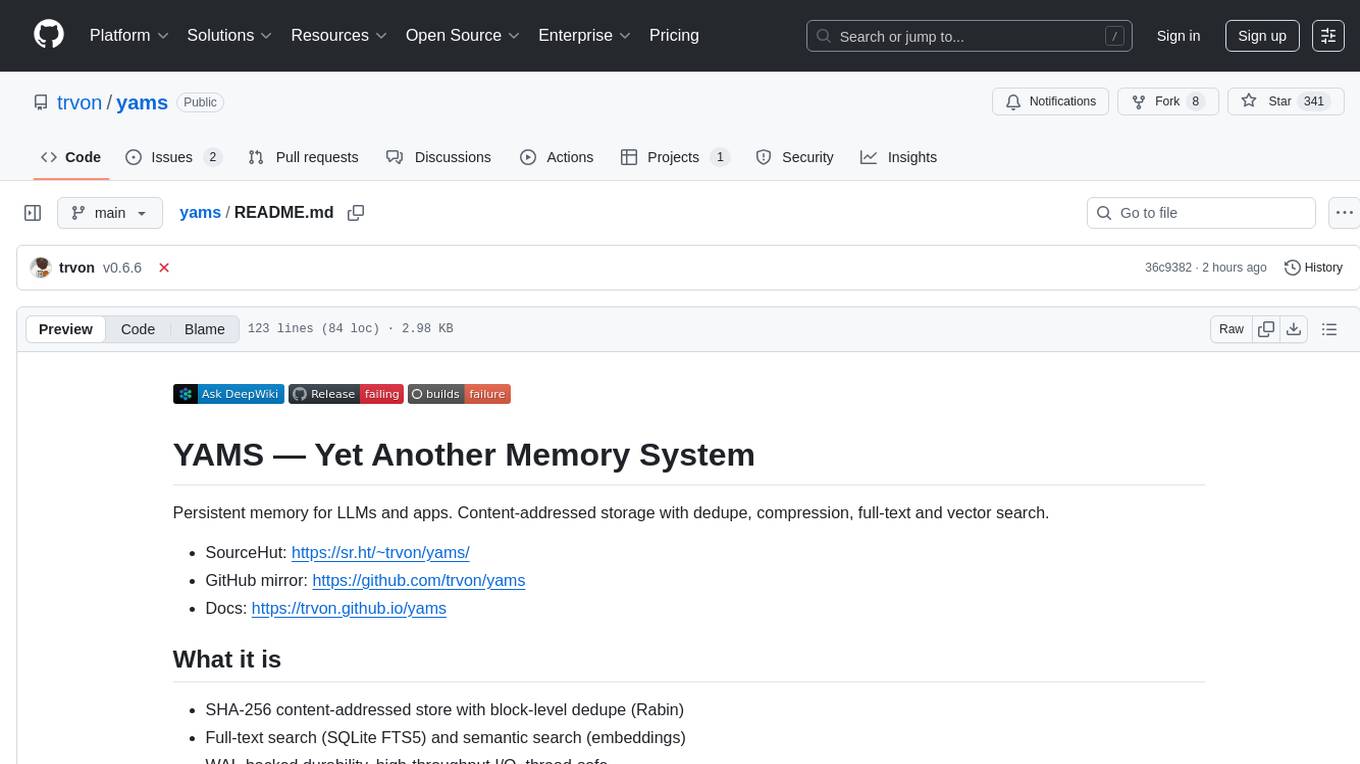
yams
YAMS (Yet Another Memory System) is a persistent memory system designed for Large Language Models (LLMs) and applications. It provides content-addressed storage with features such as deduplication, compression, full-text search, and vector search. The system is built with SHA-256 content-addressed store, block-level deduplication, full-text search using SQLite FTS5, semantic search with embeddings, WAL-backed durability, high-throughput I/O, and thread-safe operations. YAMS supports Linux x86_64/ARM64 and macOS x86_64/ARM64 platforms. It is recommended to build using Conan for managing dependencies and ensuring proper installation. Users can interact with YAMS through a command-line interface for tasks like initialization, adding content, searching, and retrieving data. Additionally, YAMS provides LLM-friendly patterns for caching web content, storing code diffs, and integrating with other systems through an API in C++. Troubleshooting tips include creating a default Conan profile and handling PDF support issues during the build process. The project is licensed under Apache-2.0.
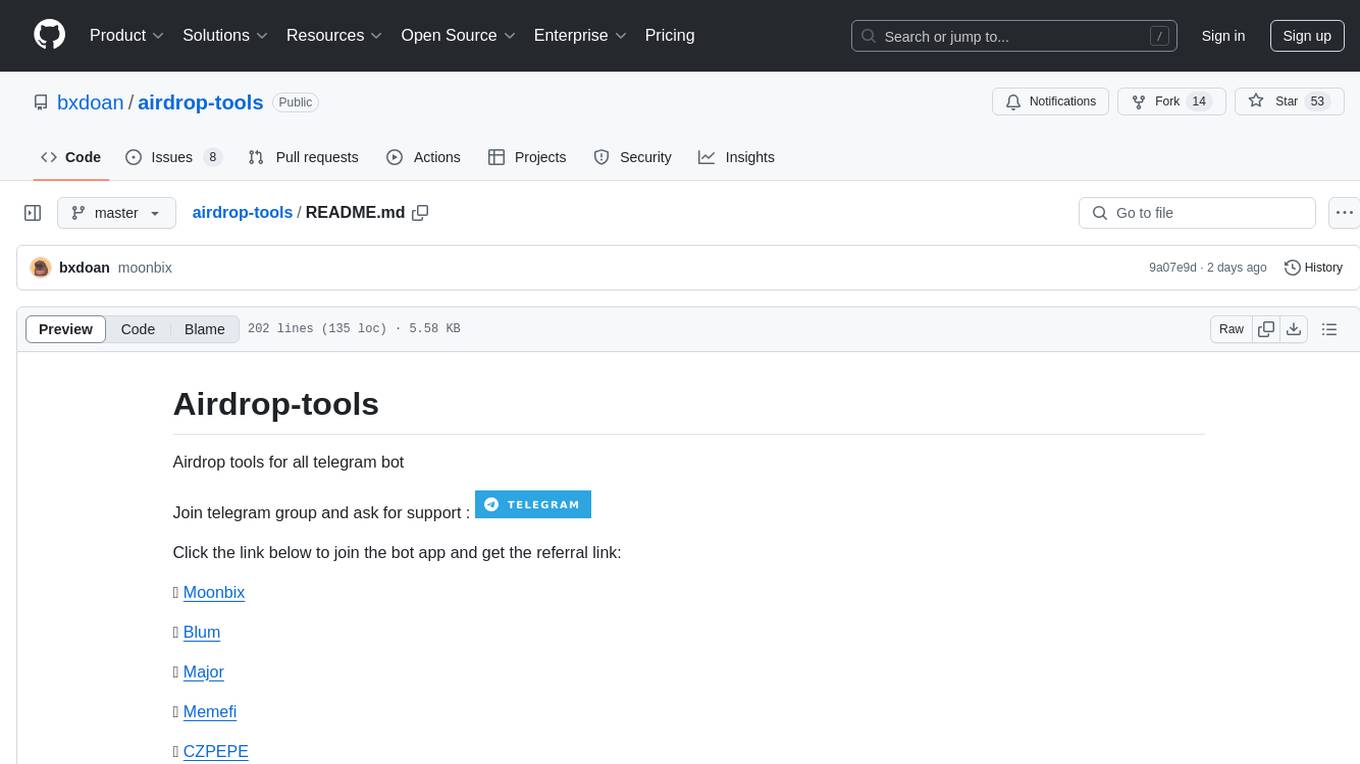
airdrop-tools
Airdrop-tools is a repository containing tools for all Telegram bots. Users can join the Telegram group for support and access various bot apps like Moonbix, Blum, Major, Memefi, and more. The setup requires Node.js and Python, with instructions on creating data directories and installing extensions. Users can run different tools like Blum, Major, Moonbix, Yescoin, Matchain, Fintopio, Agent301, IAMDOG, Banana, Cats, Wonton, and Xkucoin by following specific commands. The repository also provides contact information and options for supporting the creator.
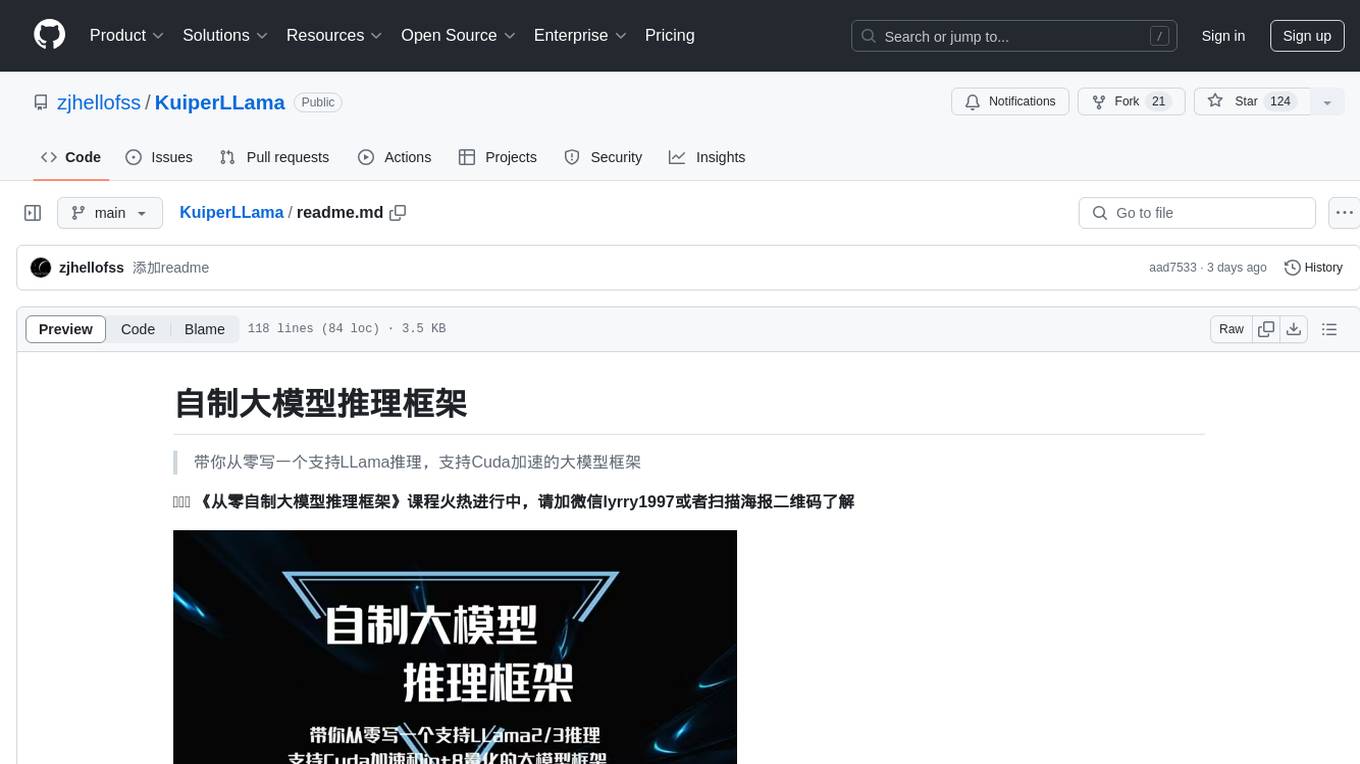
KuiperLLama
KuiperLLama is a custom large model inference framework that guides users in building a LLama-supported inference framework with Cuda acceleration from scratch. The framework includes modules for architecture design, LLama2 model support, model quantization, Cuda basics, operator implementation, and fun tasks like text generation and storytelling. It also covers learning other commercial inference frameworks for comprehensive understanding. The project provides detailed tutorials and resources for developing and optimizing large models for efficient inference.
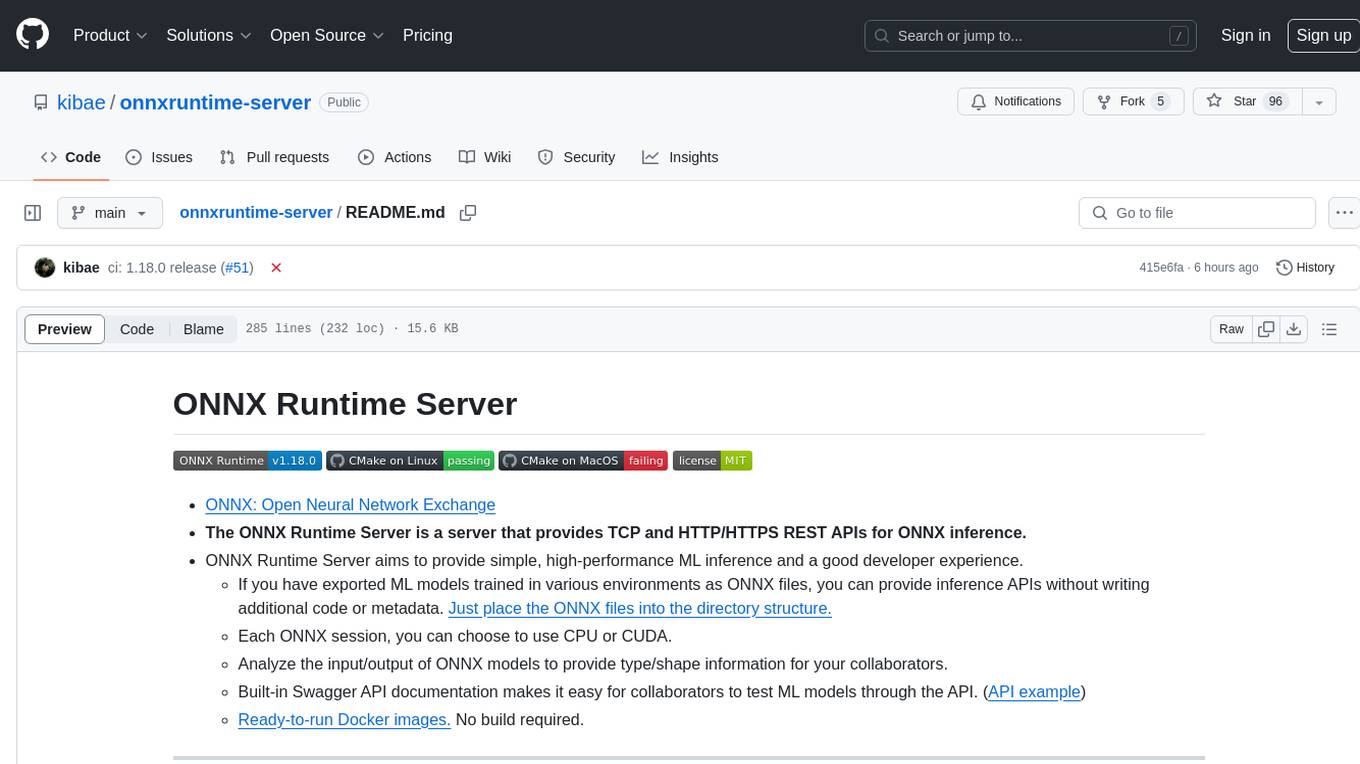
onnxruntime-server
ONNX Runtime Server is a server that provides TCP and HTTP/HTTPS REST APIs for ONNX inference. It aims to offer simple, high-performance ML inference and a good developer experience. Users can provide inference APIs for ONNX models without writing additional code by placing the models in the directory structure. Each session can choose between CPU or CUDA, analyze input/output, and provide Swagger API documentation for easy testing. Ready-to-run Docker images are available, making it convenient to deploy the server.
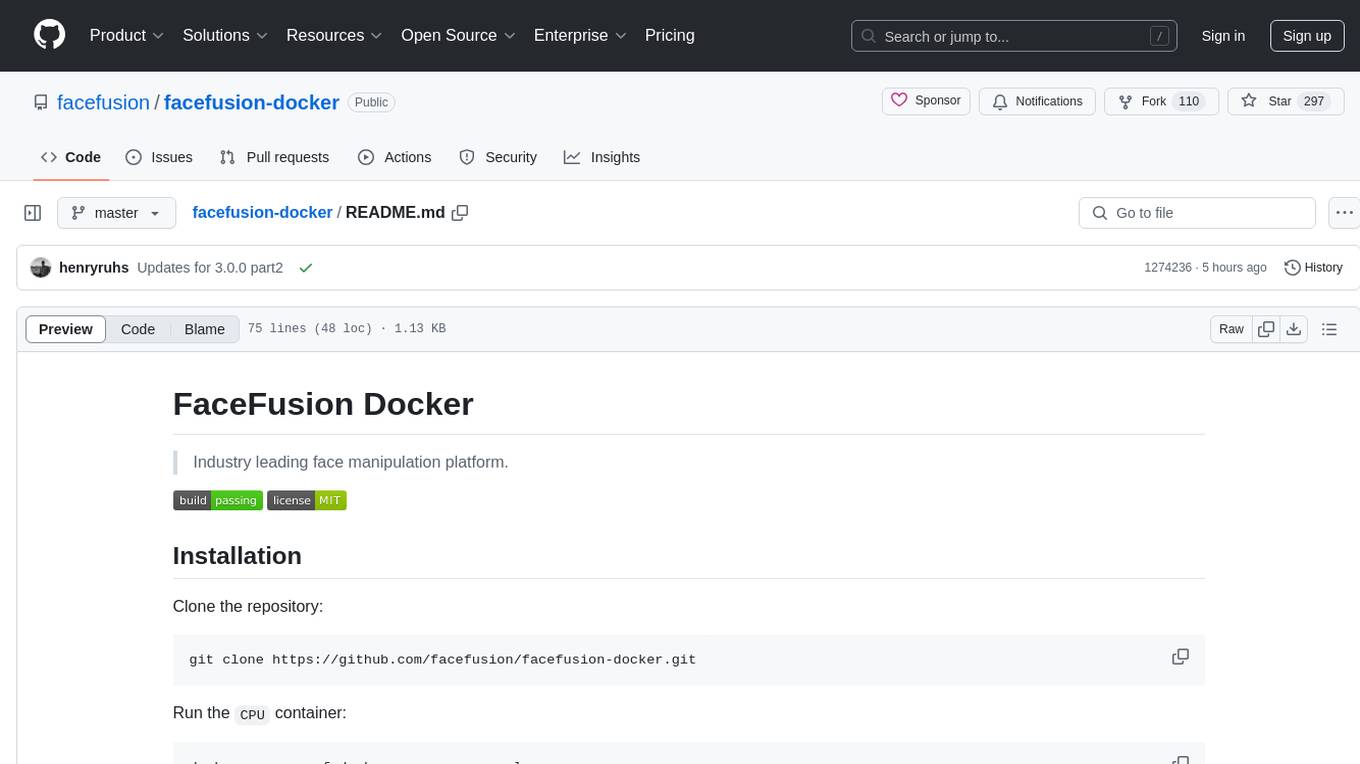
facefusion-docker
FaceFusion Docker is an industry leading face manipulation platform that provides a seamless way to manipulate faces in images and videos. The repository offers Docker containers for CPU, CUDA, TensorRT, and ROCm environments, allowing users to easily set up and run the platform. Users can access different containers through specific ports to browse and interact with the face manipulation features. The platform is designed to be user-friendly and efficient for various face manipulation tasks.
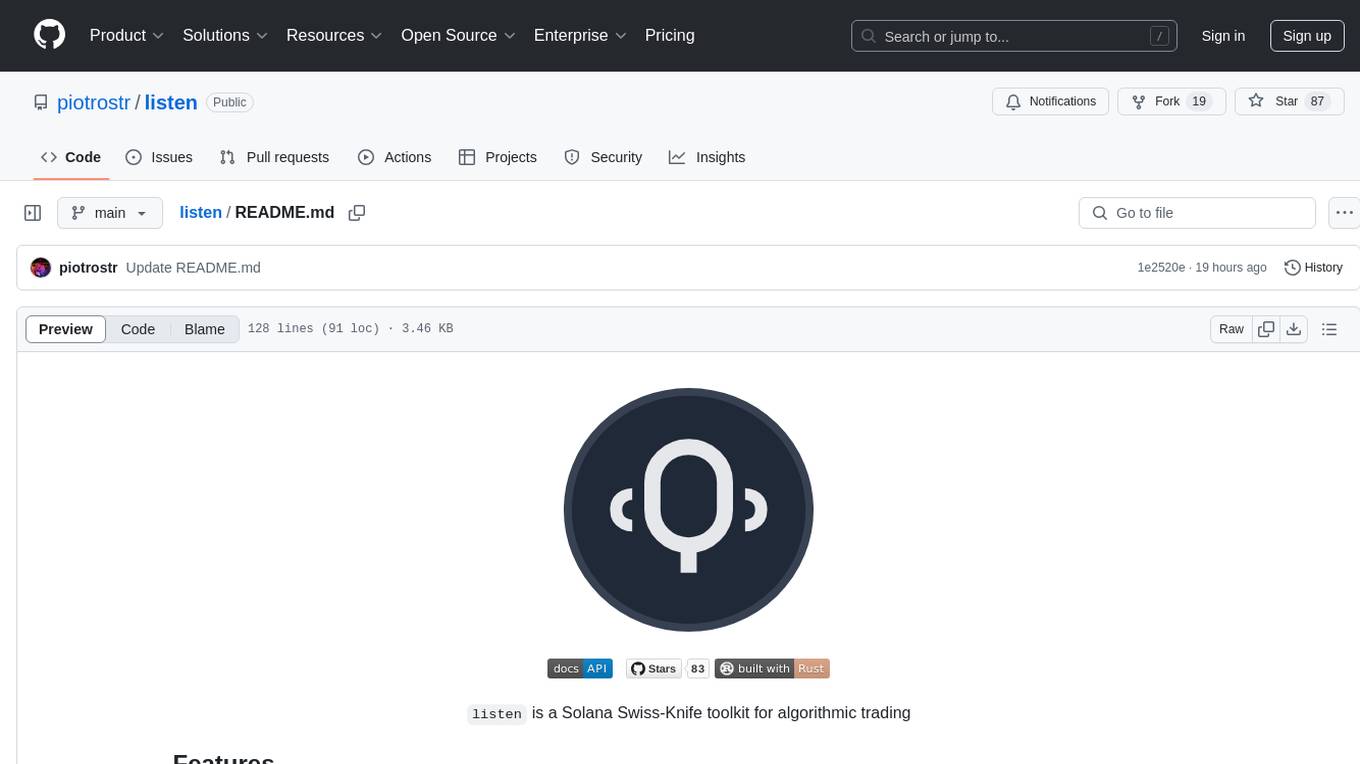
listen
Listen is a Solana Swiss-Knife toolkit for algorithmic trading, offering real-time transaction monitoring, multi-DEX swap execution, fast transactions with Jito MEV bundles, price tracking, token management utilities, and performance monitoring. It includes tools for grabbing data from unofficial APIs and works with the $arc rig framework for AI Agents to interact with the Solana blockchain. The repository provides miscellaneous tools for analysis and data retrieval, with the core functionality in the `src` directory.
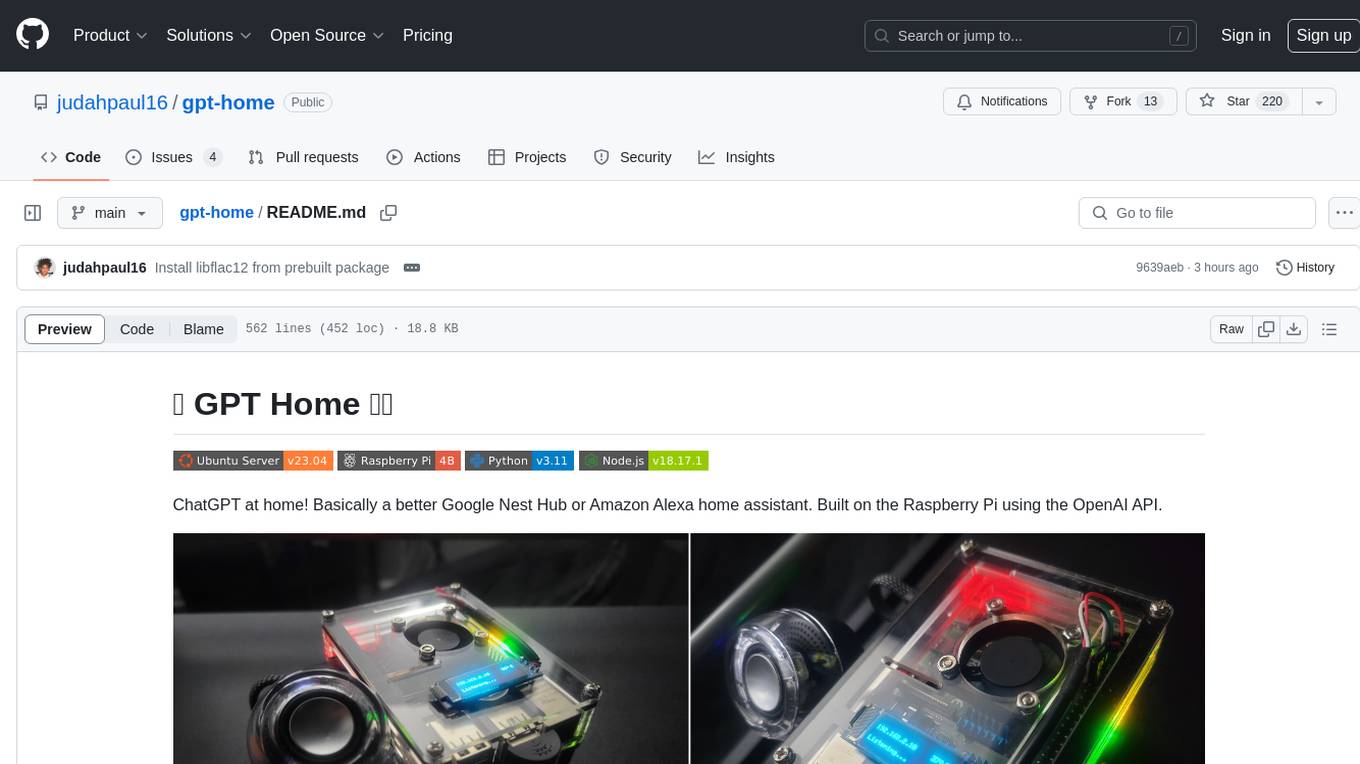
gpt-home
GPT Home is a project that allows users to build their own home assistant using Raspberry Pi and OpenAI API. It serves as a guide for setting up a smart home assistant similar to Google Nest Hub or Amazon Alexa. The project integrates various components like OpenAI, Spotify, Philips Hue, and OpenWeatherMap to provide a personalized home assistant experience. Users can follow the detailed instructions provided to build their own version of the home assistant on Raspberry Pi, with optional components for customization. The project also includes system configurations, dependencies installation, and setup scripts for easy deployment. Overall, GPT Home offers a DIY solution for creating a smart home assistant using Raspberry Pi and OpenAI technology.
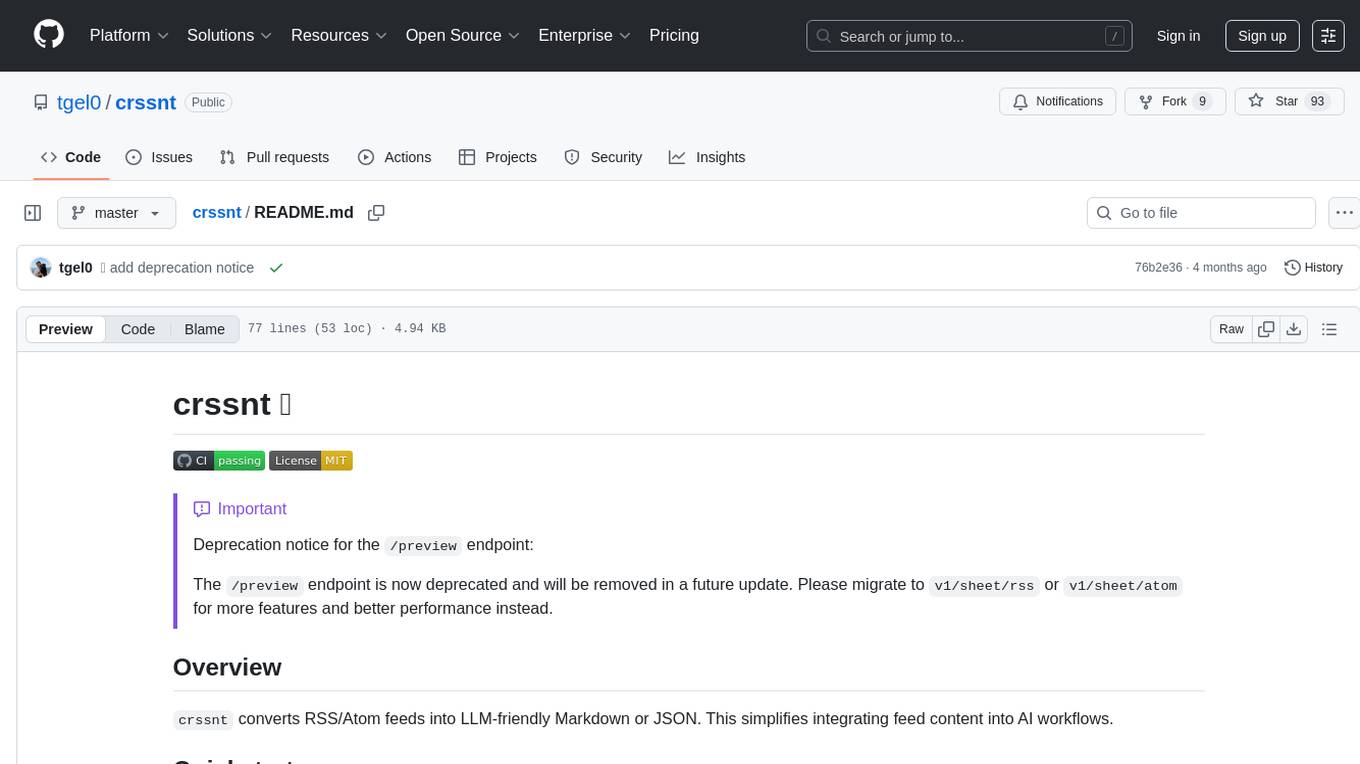
crssnt
crssnt is a tool that converts RSS/Atom feeds into LLM-friendly Markdown or JSON, simplifying integration of feed content into AI workflows. It supports LLM-optimized conversion, multiple output formats, feed aggregation, and Google Sheet support. Users can access various endpoints for feed conversion and Google Sheet processing, with query parameters for customization. The tool processes user-provided URLs transiently without storing feed data, and can be self-hosted as Firebase Cloud Functions. Contributions are welcome under the MIT License.
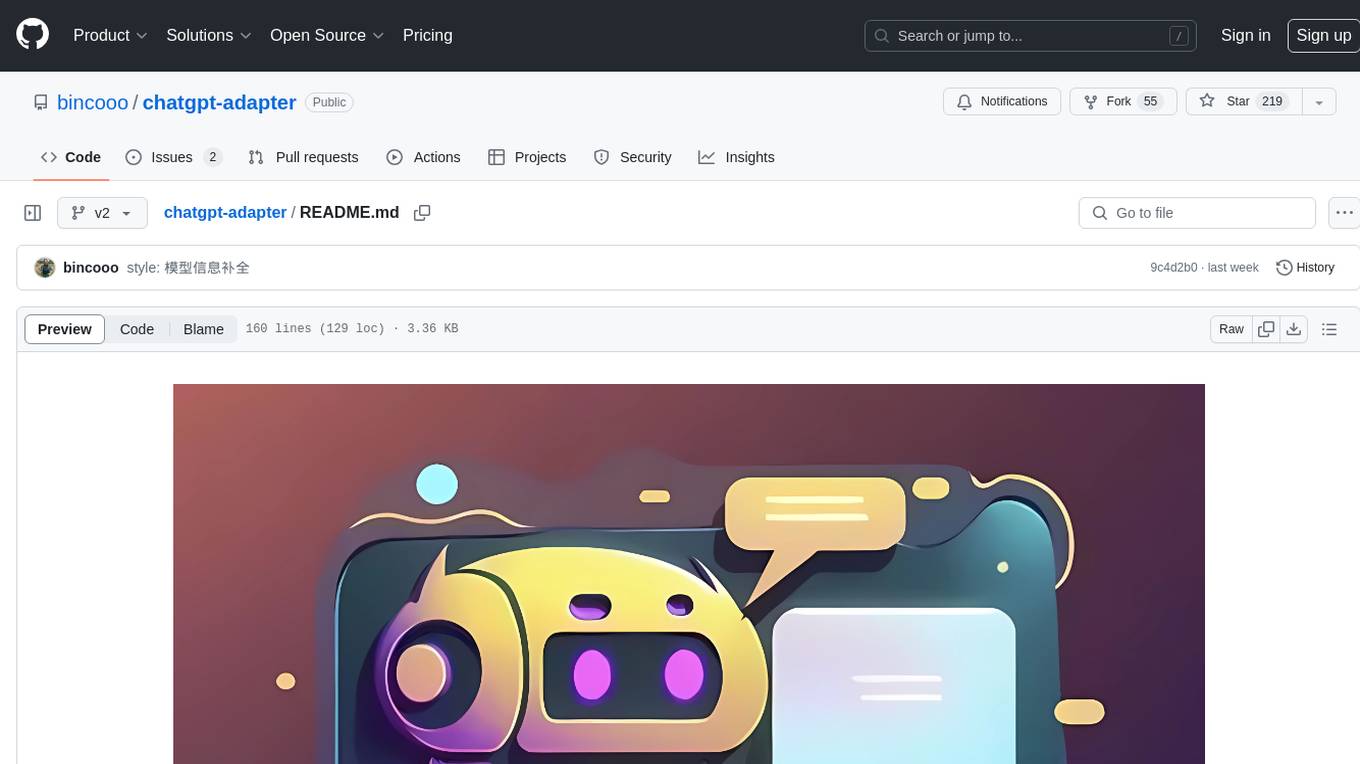
chatgpt-adapter
ChatGPT-Adapter is an interface service that integrates various free services together. It provides a unified interface specification and integrates services like Bing, Claude-2, Gemini. Users can start the service by running the linux-server script and set proxies if needed. The tool offers model lists for different adapters, completion dialogues, authorization methods for different services like Claude, Bing, Gemini, Coze, and Lmsys. Additionally, it provides a free drawing interface with options like coze.dall-e-3, sd.dall-e-3, xl.dall-e-3, pg.dall-e-3 based on user-provided Authorization keys. The tool also supports special flags for enhanced functionality.
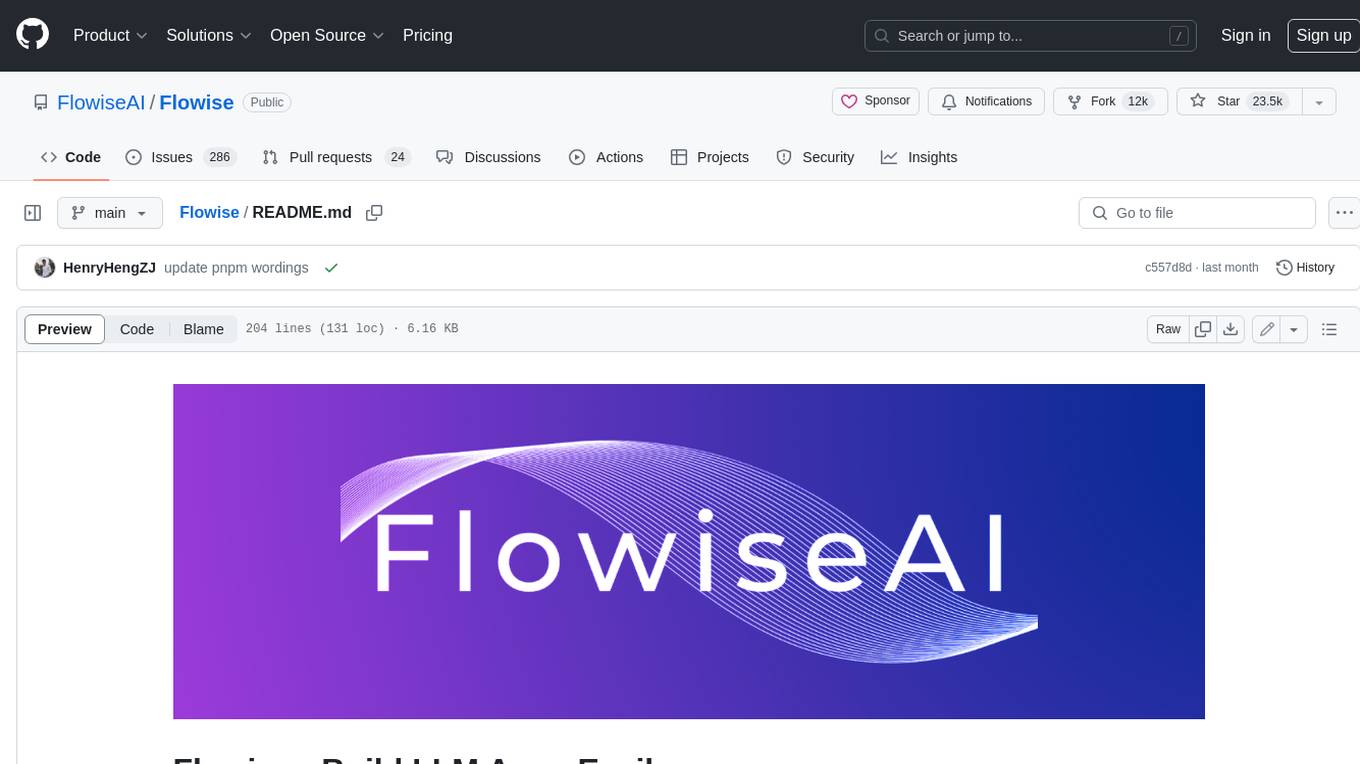
Flowise
Flowise is a tool that allows users to build customized LLM flows with a drag-and-drop UI. It is open-source and self-hostable, and it supports various deployments, including AWS, Azure, Digital Ocean, GCP, Railway, Render, HuggingFace Spaces, Elestio, Sealos, and RepoCloud. Flowise has three different modules in a single mono repository: server, ui, and components. The server module is a Node backend that serves API logics, the ui module is a React frontend, and the components module contains third-party node integrations. Flowise supports different environment variables to configure your instance, and you can specify these variables in the .env file inside the packages/server folder.
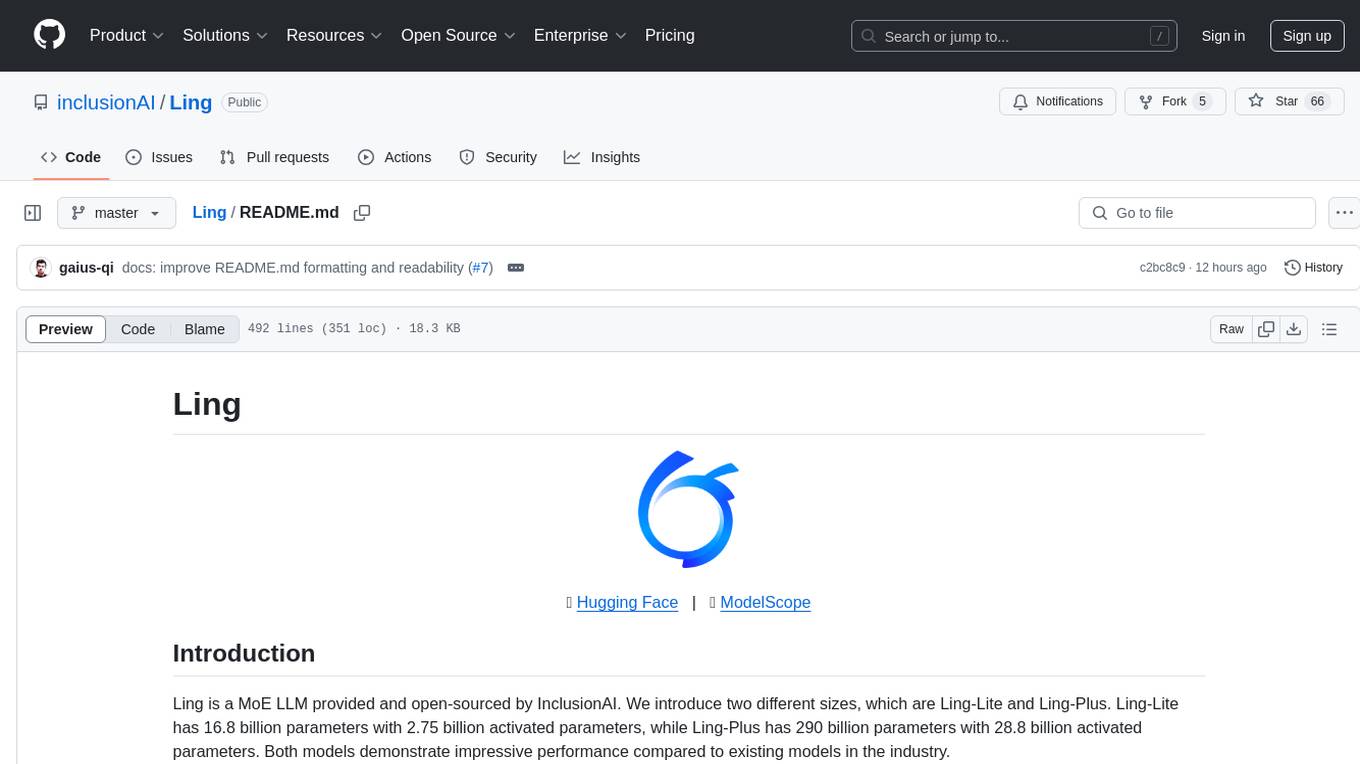
Ling
Ling is a MoE LLM provided and open-sourced by InclusionAI. It includes two different sizes, Ling-Lite with 16.8 billion parameters and Ling-Plus with 290 billion parameters. These models show impressive performance and scalability for various tasks, from natural language processing to complex problem-solving. The open-source nature of Ling encourages collaboration and innovation within the AI community, leading to rapid advancements and improvements. Users can download the models from Hugging Face and ModelScope for different use cases. Ling also supports offline batched inference and online API services for deployment. Additionally, users can fine-tune Ling models using Llama-Factory for tasks like SFT and DPO.
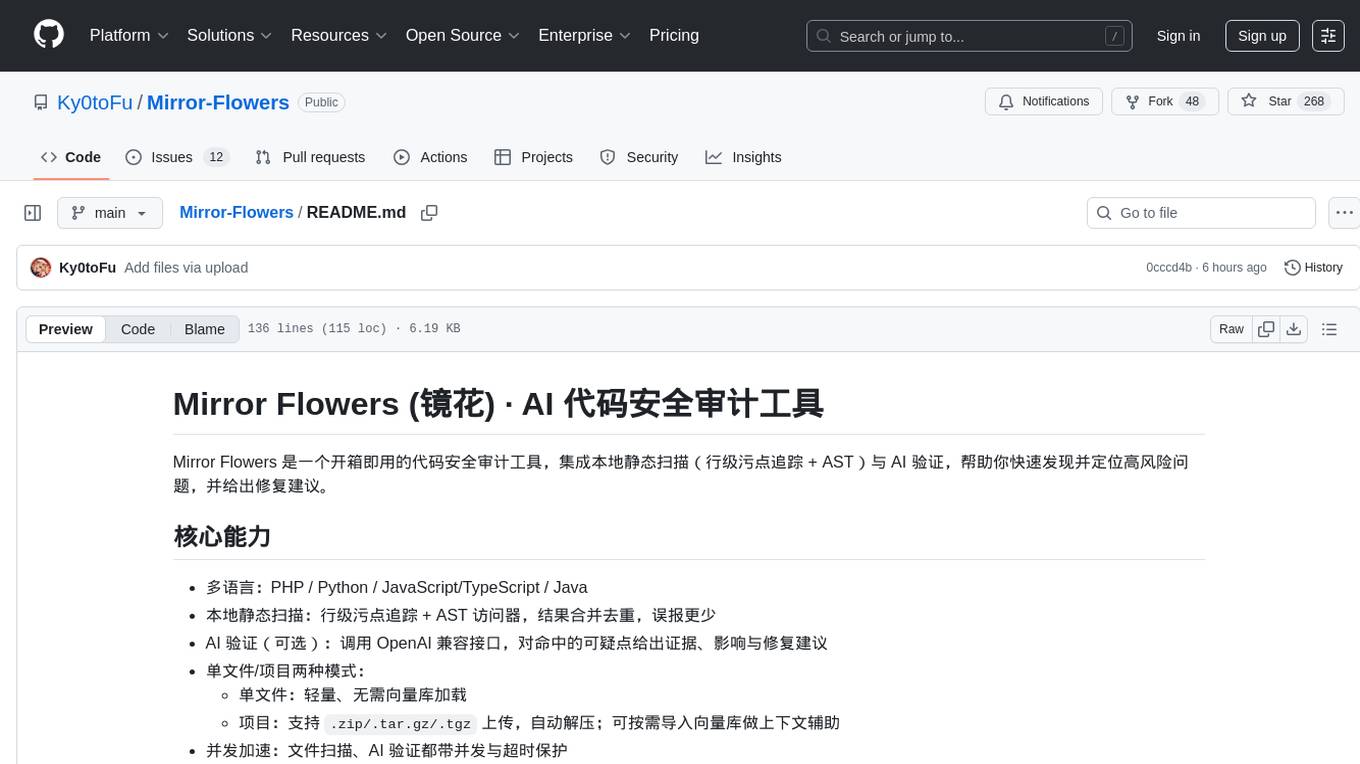
Mirror-Flowers
Mirror Flowers is an out-of-the-box code security auditing tool that integrates local static scanning (line-level taint tracking + AST) with AI verification to help quickly discover and locate high-risk issues, providing repair suggestions. It supports multiple languages such as PHP, Python, JavaScript/TypeScript, and Java. The tool offers both single-file and project modes, with features like concurrent acceleration, integrated UI for visual results, and compatibility with multiple OpenAI interface providers. Users can configure the tool through environment variables or API, and can utilize it through a web UI or HTTP API for tasks like single-file auditing or project auditing.
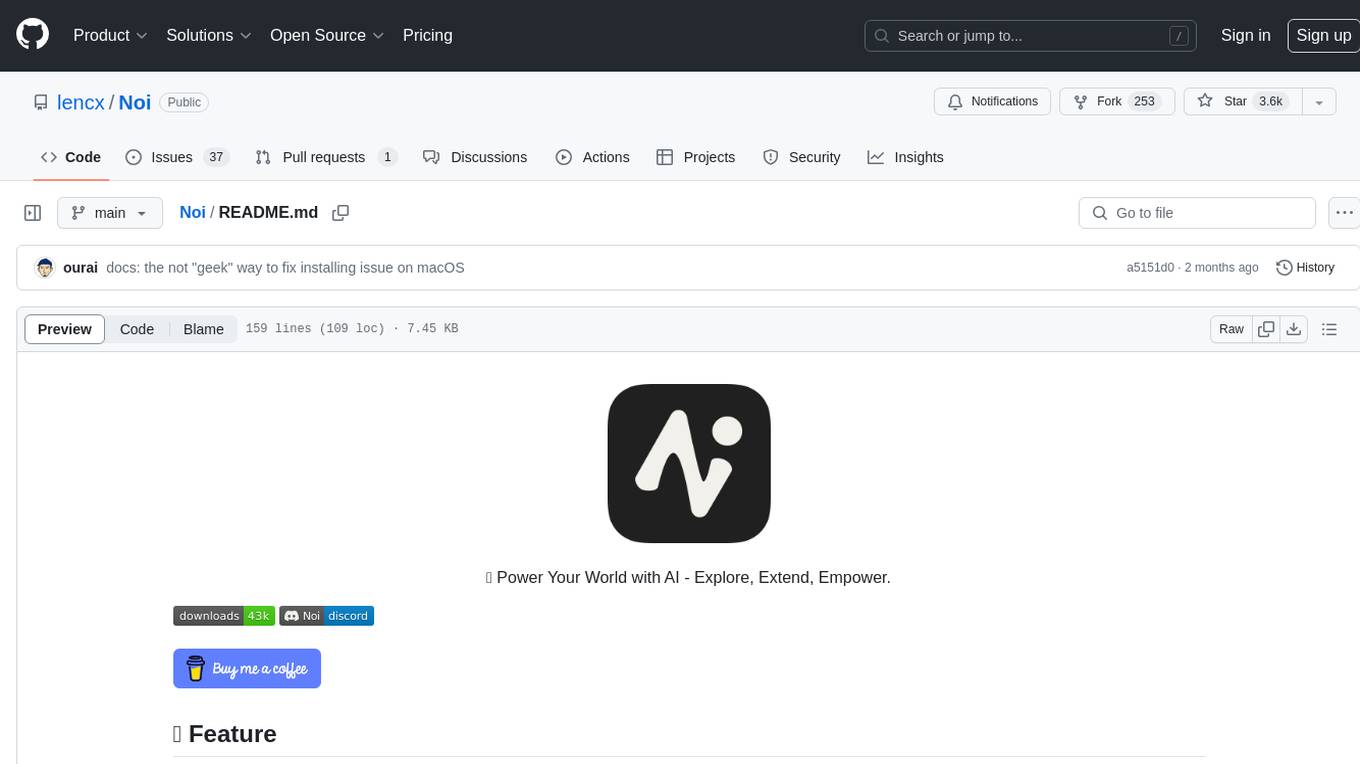
Noi
Noi is an AI-enhanced customizable browser designed to streamline digital experiences. It includes curated AI websites, allows adding any URL, offers prompts management, Noi Ask for batch messaging, various themes, Noi Cache Mode for quick link access, cookie data isolation, and more. Users can explore, extend, and empower their browsing experience with Noi.
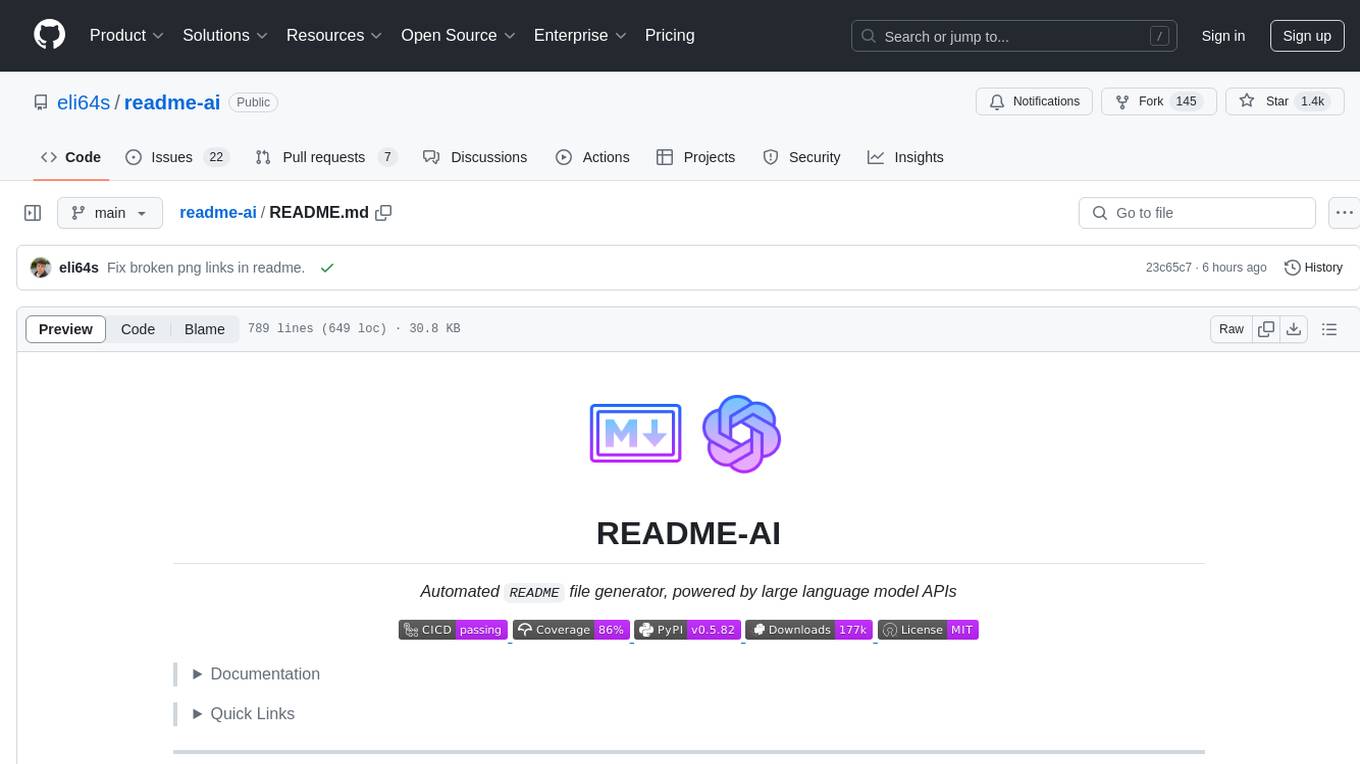
readme-ai
README-AI is a developer tool that auto-generates README.md files using a combination of data extraction and generative AI. It streamlines documentation creation and maintenance, enhancing developer productivity. This project aims to enable all skill levels, across all domains, to better understand, use, and contribute to open-source software. It offers flexible README generation, supports multiple large language models (LLMs), provides customizable output options, works with various programming languages and project types, and includes an offline mode for generating boilerplate README files without external API calls.
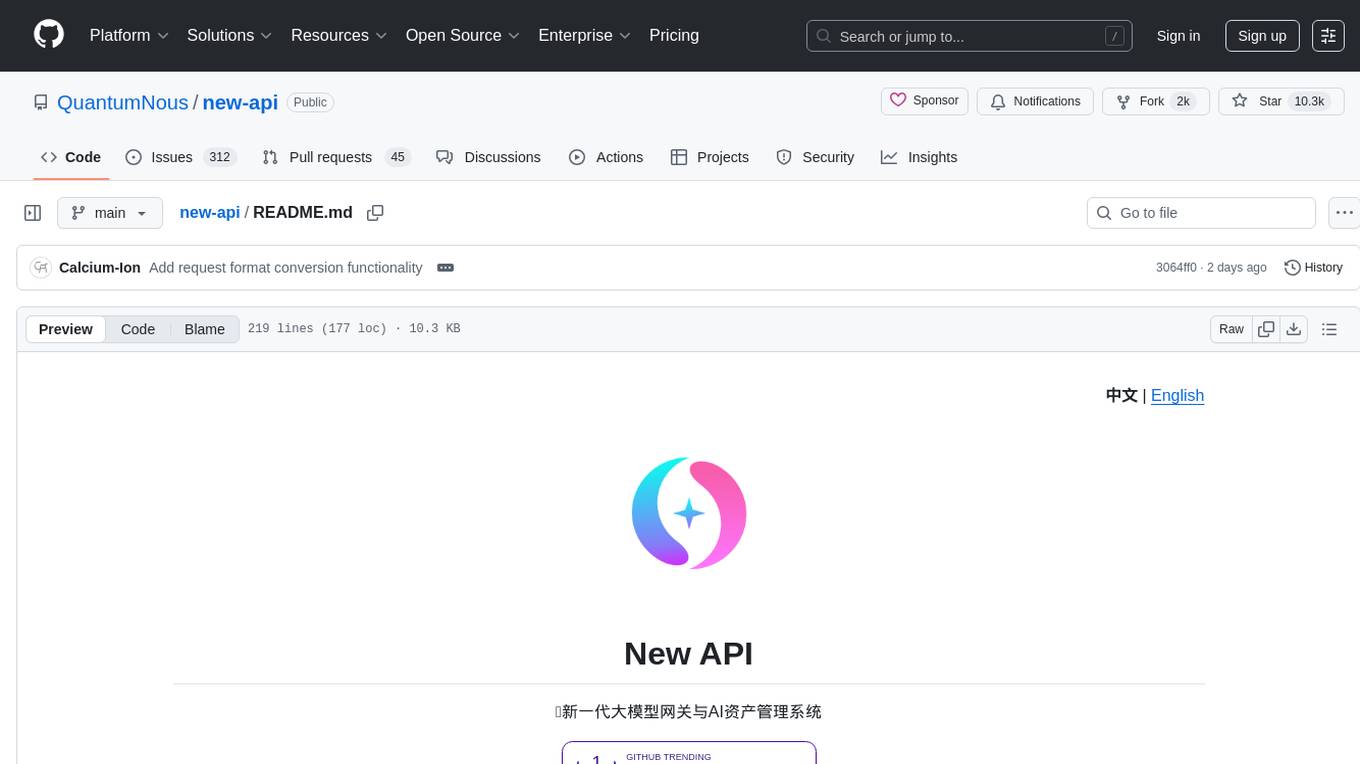
new-api
New API is a next-generation large model gateway and AI asset management system that provides a wide range of features, including a new UI interface, multi-language support, online recharge function, key query for usage quota, compatibility with the original One API database, model charging by usage count, channel weighted randomization, data dashboard, token grouping and model restrictions, support for various authorization login methods, support for Rerank models, OpenAI Realtime API, Claude Messages format, reasoning effort setting, content reasoning, user-specific model rate limiting, request format conversion, cache billing support, and various model support such as gpts, Midjourney-Proxy, Suno API, custom channels, Rerank models, Claude Messages format, Dify, and more.
For similar tasks
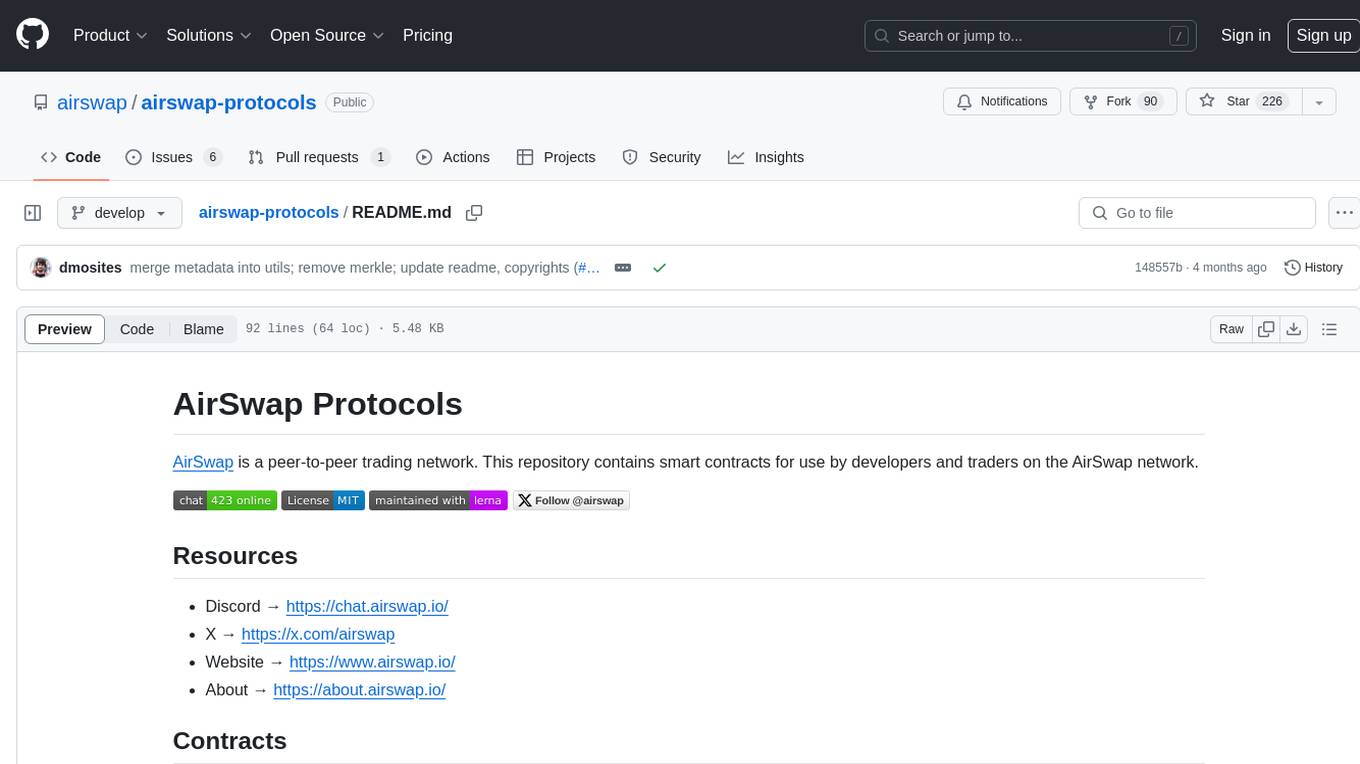
airswap-protocols
AirSwap Protocols is a repository containing smart contracts for developers and traders on the AirSwap peer-to-peer trading network. It includes various packages for functionalities like server registry, atomic token swap, staking, rewards pool, batch token and order calls, libraries, and utils. The repository follows a branching and release process for contracts and tools, with steps for regular development process and individual package features or patches. Users can deploy and verify contracts using specific commands with network flags.

Airchains
Airchains is a tool for setting up a local EVM network for testing and development purposes. It provides step-by-step instructions for installing and configuring the necessary components. The tool helps users create their own local EVM network, manage keys, deploy contracts, and interact with the network using RPC. It also guides users on setting up a station for tracking and managing transactions. Airchains is designed to facilitate testing and development activities related to blockchain applications built on the EVM platform.
For similar jobs
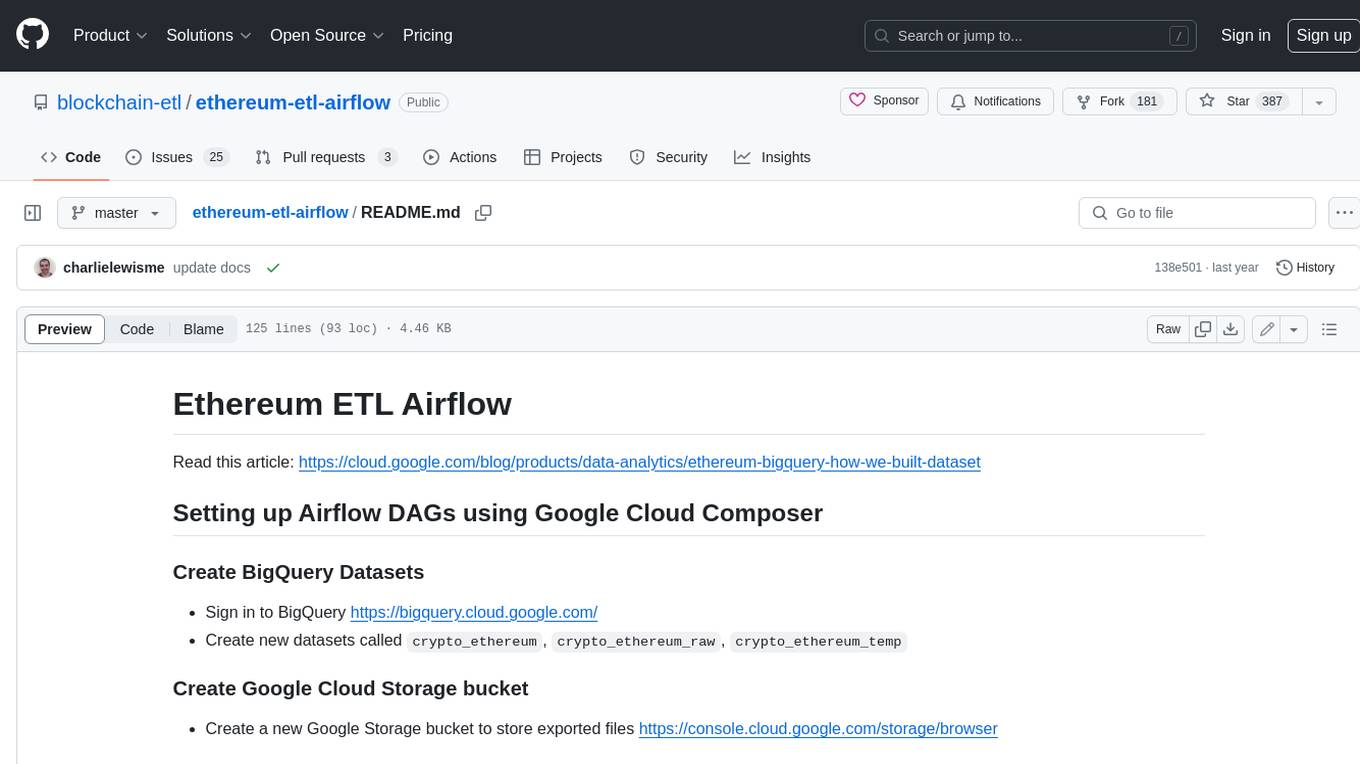
ethereum-etl-airflow
This repository contains Airflow DAGs for extracting, transforming, and loading (ETL) data from the Ethereum blockchain into BigQuery. The DAGs use the Google Cloud Platform (GCP) services, including BigQuery, Cloud Storage, and Cloud Composer, to automate the ETL process. The repository also includes scripts for setting up the GCP environment and running the DAGs locally.
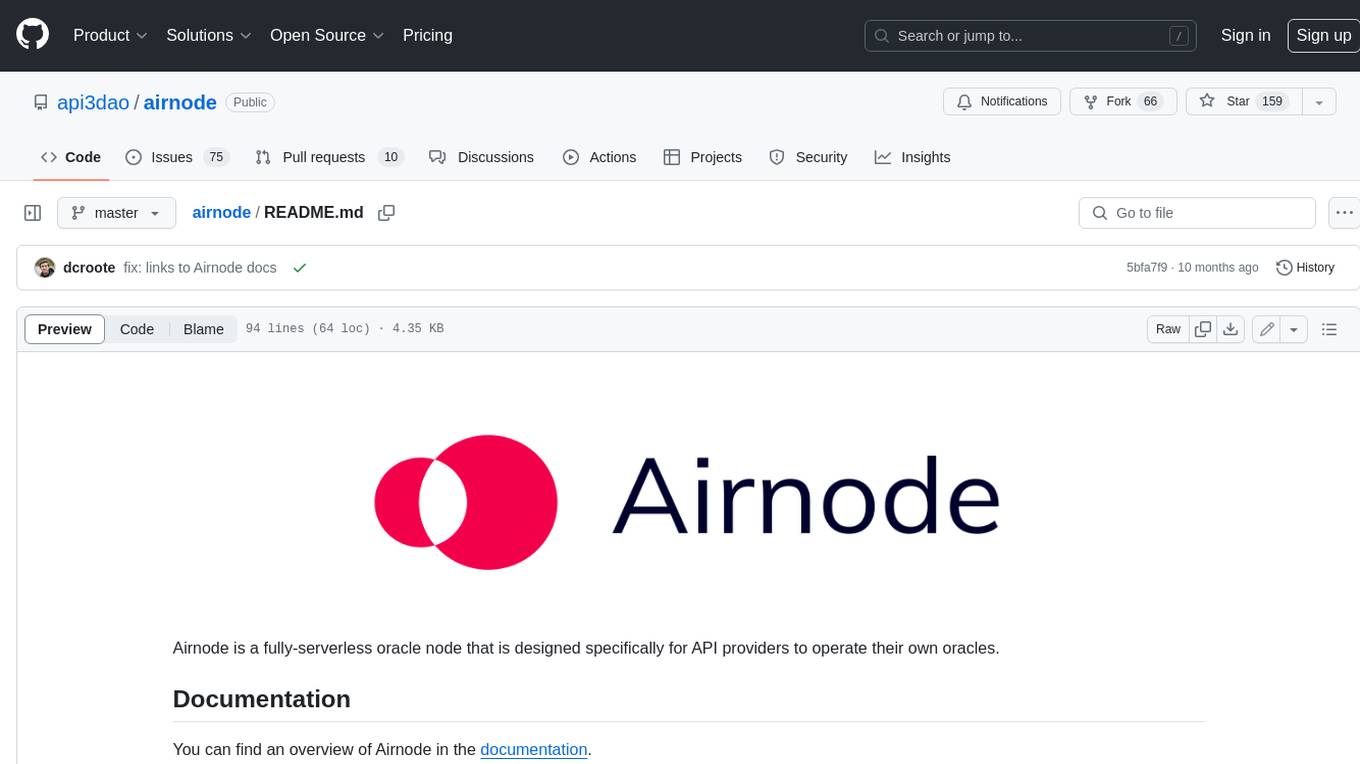
airnode
Airnode is a fully-serverless oracle node that is designed specifically for API providers to operate their own oracles.
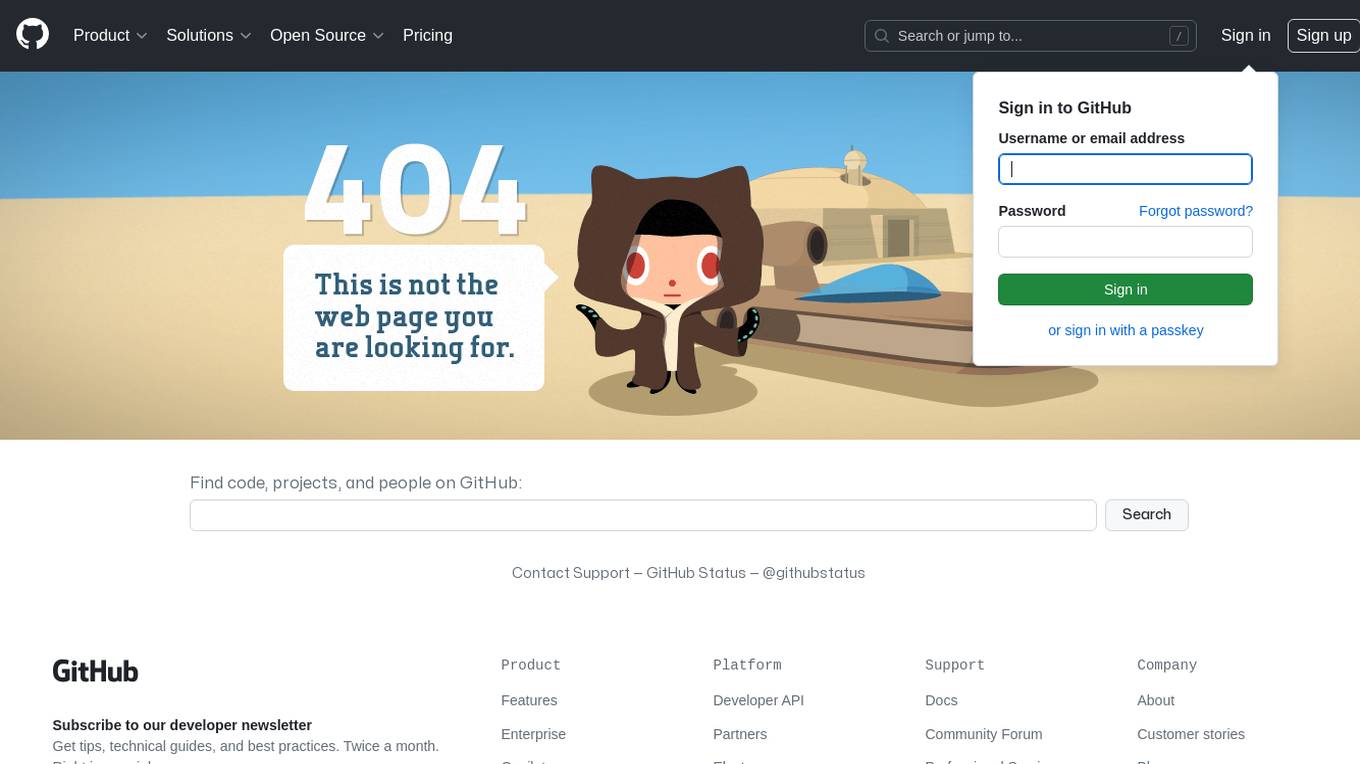
CHATPGT-MEV-BOT
The 𝓜𝓔𝓥-𝓑𝓞𝓣 is a revolutionary tool that empowers users to maximize their ETH earnings through advanced slippage techniques within the Ethereum ecosystem. Its user-centric design, optimized earning mechanism, and comprehensive security measures make it an indispensable tool for traders seeking to enhance their crypto trading strategies. With its current free access, there's no better time to explore the 𝓜𝓔𝓥-𝓑𝓞𝓣's capabilities and witness the transformative impact it can have on your crypto trading journey.
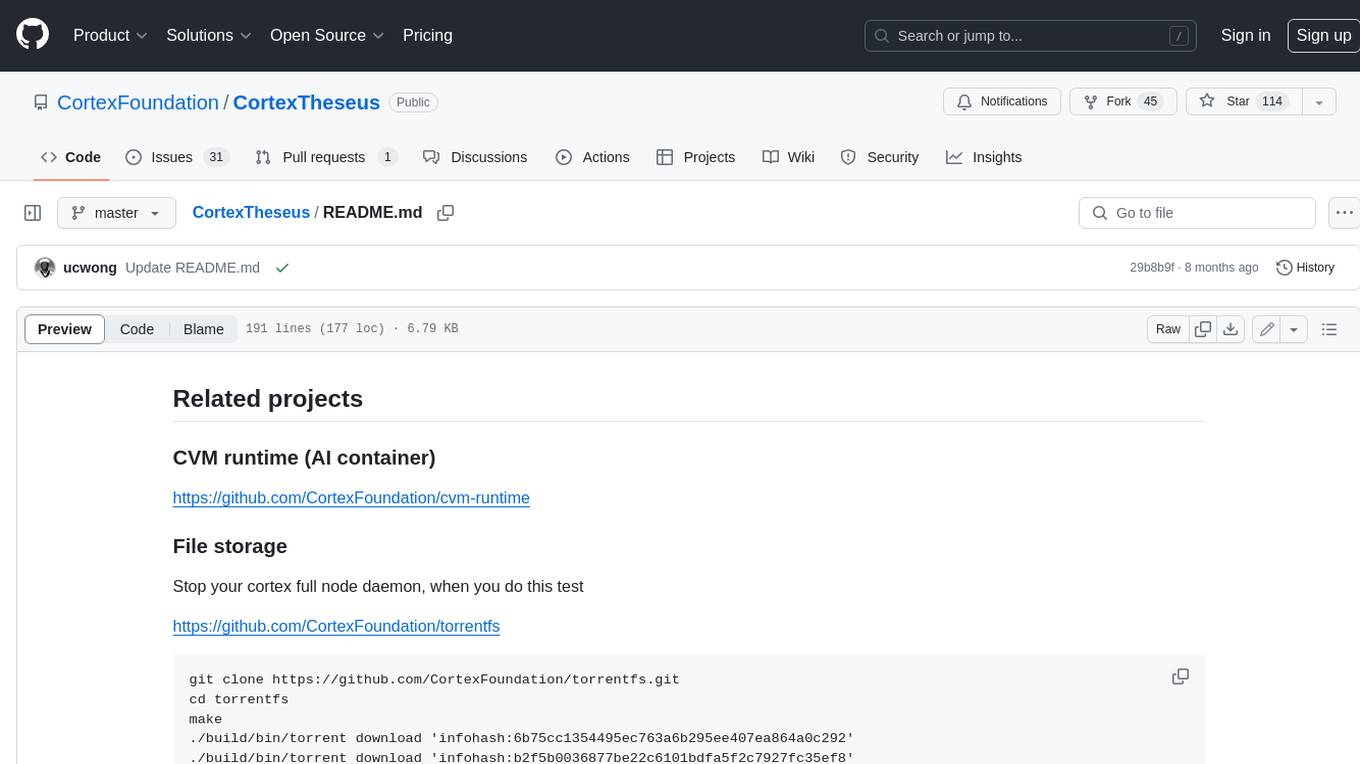
CortexTheseus
CortexTheseus is a full node implementation of the Cortex blockchain, written in C++. It provides a complete set of features for interacting with the Cortex network, including the ability to create and manage accounts, send and receive transactions, and participate in consensus. CortexTheseus is designed to be scalable, secure, and easy to use, making it an ideal choice for developers building applications on the Cortex blockchain.
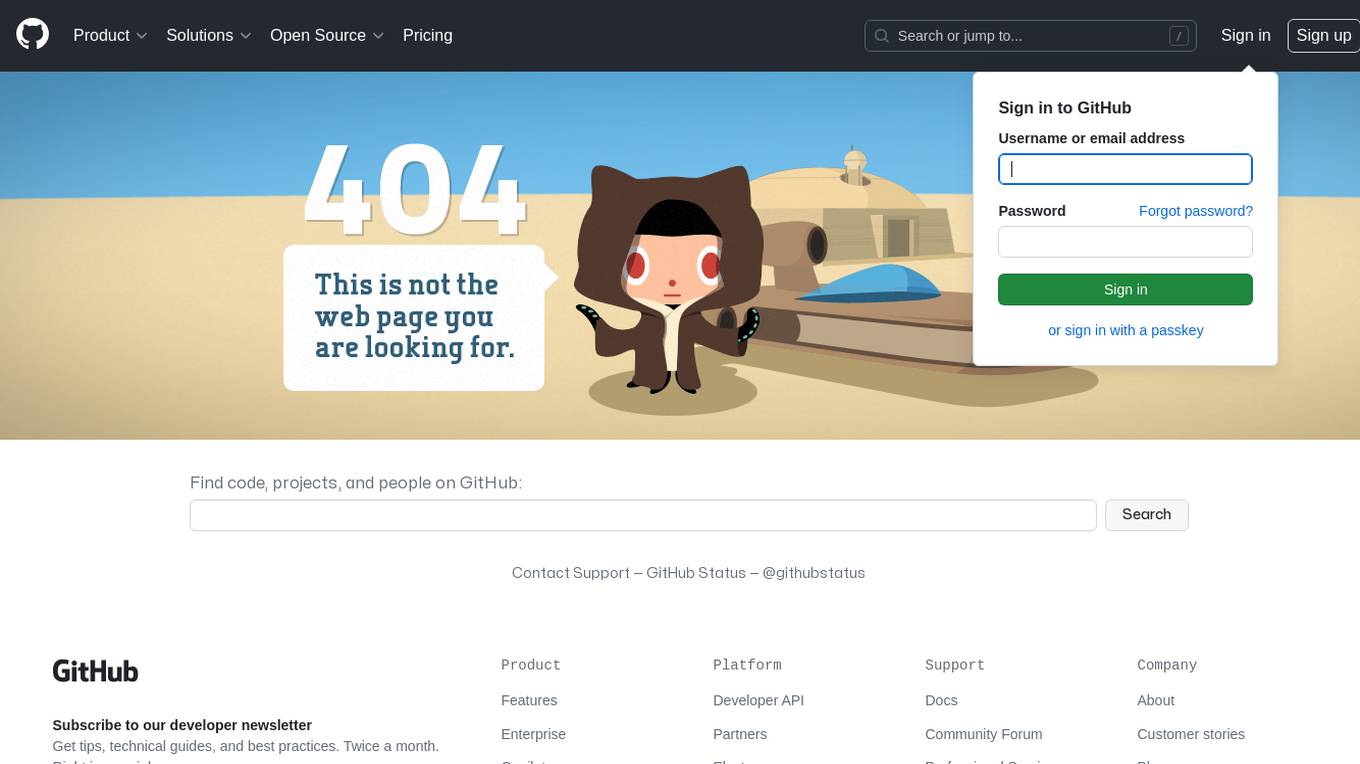
CHATPGT-MEV-BOT-ETH
This tool is a bot that monitors the performance of MEV transactions on the Ethereum blockchain. It provides real-time data on MEV profitability, transaction volume, and network congestion. The bot can be used to identify profitable MEV opportunities and to track the performance of MEV strategies.
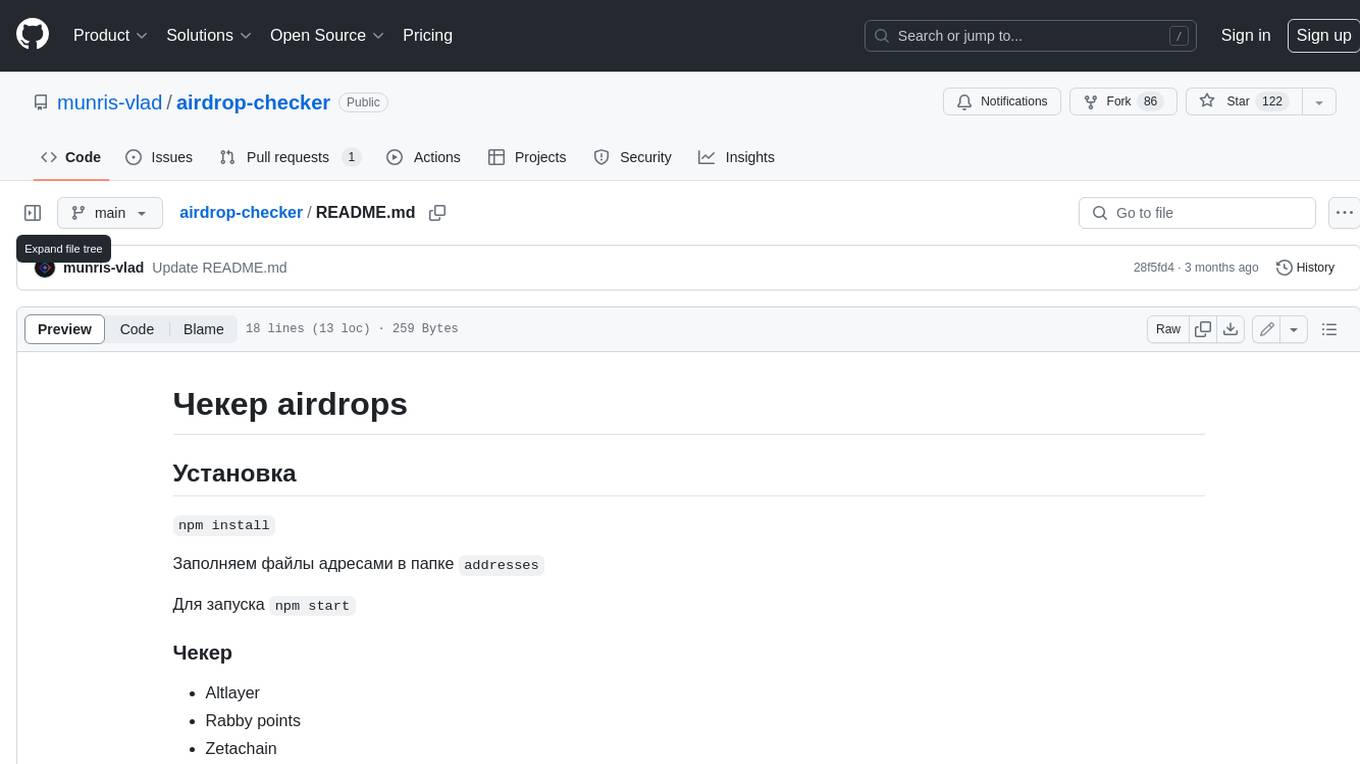
airdrop-checker
Airdrop-checker is a tool that helps you to check if you are eligible for any airdrops. It supports multiple airdrops, including Altlayer, Rabby points, Zetachain, Frame, Anoma, Dymension, and MEME. To use the tool, you need to install it using npm and then fill the addresses files in the addresses folder with your wallet addresses. Once you have done this, you can run the tool using npm start.
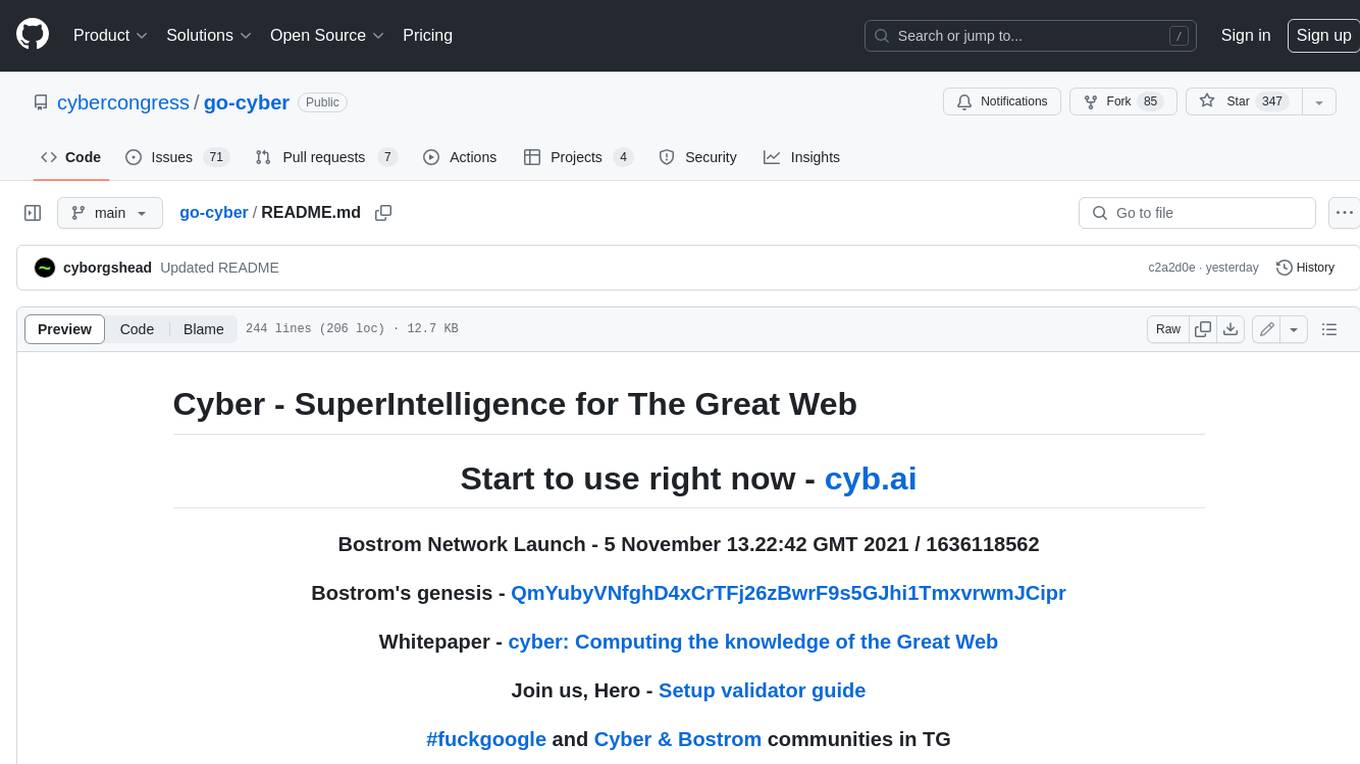
go-cyber
Cyber is a superintelligence protocol that aims to create a decentralized and censorship-resistant internet. It uses a novel consensus mechanism called CometBFT and a knowledge graph to store and process information. Cyber is designed to be scalable, secure, and efficient, and it has the potential to revolutionize the way we interact with the internet.
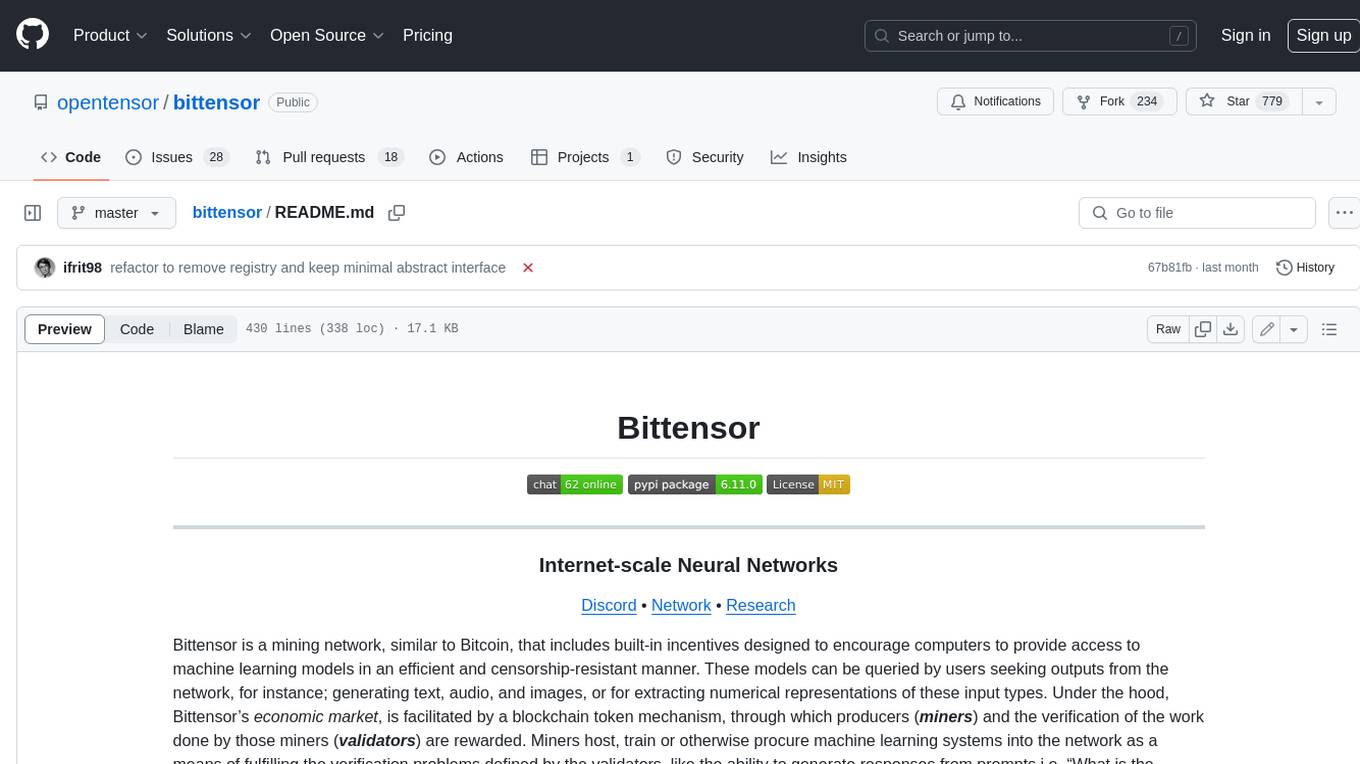
bittensor
Bittensor is an internet-scale neural network that incentivizes computers to provide access to machine learning models in a decentralized and censorship-resistant manner. It operates through a token-based mechanism where miners host, train, and procure machine learning systems to fulfill verification problems defined by validators. The network rewards miners and validators for their contributions, ensuring continuous improvement in knowledge output. Bittensor allows anyone to participate, extract value, and govern the network without centralized control. It supports tasks such as generating text, audio, images, and extracting numerical representations.